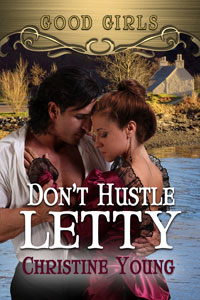Outline – Panster
Do you outline your books or just start writing? Are you a punster or an outliner and what is the best way to write a book?
I never outline my books.

Outliner:
I know many authors who thoroughly outline their books. The techniques vary but there are many. There are computer programs one can buy to help outline a book. Some use whiteboards. An author I knew years ago, used a wine box to help outline her books. I don’t remember exactly how she did this. If you are an outliner, what method do you use?
Panster:
Some say they write by the seat of their pants, hence the name. They let the characters speak to them as they write and project the direction of the book. If you are a punster, how do you keep your characters under control?
I find I’m somewhere between the two. When I’ve tried to outline an entire book, nothing turns out the way I planned. For me, I’ve found outlining scene by scene helps the book progress. I usually have chapter that are plotted with the scenes within them. I don’t actually outline on paper though, it’s always in my head.
What do you consider the best way for you to write a book?
CHECK OUT MY PARANORMAL RELEASE

Buy at: Amazon
BLURB
Ripped from her family at the top of Infinity Cliff, Kimi McKenna finds herself thrust somewhere into the future. Dark elements threaten to destroy the earth unless Kimi can work together with the white witch to stop the destruction. Confused by her mate’s role in the conspiracy, she refuses to acknowledge the connection. But amidst raging fire and attacks on the people she is coming to hold dear, she allows Maska O’keefe into her heart.
Maska O’keefe has loved the beautiful shapeshifter for years. Unable to save her life years ago, he vows to watch over her as he is given a second chance to convince her that even though he is a witch and not a shifter, they are indeed soul mates. Kimi’s divided loyalties between her family and the cause she is now a part of will determine their relationship. Only the part she plays as the messiah can bring this to a conclusion in the final battle.



In her brilliant essay “Write Till You Drop,” Annie Dillard stated, “One line of a poem, the poet said – only one line, but thank God for that one line – drops from the ceiling. Thornton Wilder cited this unnamed writer of sonnets: one line of a sonnet falls from the ceiling, and you tap in the others around it with a jeweler’s hammer.” I love this quotation because I think there is some strange truth to it. I might wake with a line that came from where? Or am reading someone else’s work when I line appears to me. I do start with this line that appears to be a gift, but then as Wilder noted, I have to start chiseling.
In writing a mystery, I typically start with my inspiration lines, move outward, then go back and create some kind of graphic organizer to avoid leaving unintentional “red herrings.” For me, writing with an inspirational flow to begin a novel helps to get it on its feet. Then I go back over it, often changing where I start the work.
I do not outline, but let it flow out of my imagination. I let it develop in a natural fashion and go back to add or delete if passages or scenes don’t fit. I do a lot of thinking or scene development while swimming or walking along the beach.
The characters direct the action in my books. I start with a premise that I have frequently almost literally dreamed up (but while awake), and as the characters take shape they know what ought to happen next, even though at times they wander off the storyline looking for clues. Since I write mostly mysteries, I usually think I have a good idea how things will turn out — but thus far, the ending has always been a surprise/shock to me when it happens. Not once have I known accurately whodunit when I started. And it seems many times that what apparently happened at the beginning of the book was a little misleading. I find that I am likely to find my characters experiencing some violence that comes from the sky like hail, and I find it difficult to describe what’s going on sometimes. I tend to look back and see an “O Henry” twist here and there — in one case a husband and wife, both criminals, working at cross-purposes that leads to them both getting caught.
I do not outline. I have ideas in my mind of things that must be included in the book, but my difficulty and the interesting part to me is figuring out how to get from one situation to the next and making the thing seem like a whole idea. And like brother Allen in the above comment, I try to let the characters direct me. This can be troublesome because there are times when they just don’t want to do what I thought they should have. That is a pain, but it also endears them to me so much I fall in love with them.
With Hey, Joey Journal, I tried to write an outline. It was about a page and I didn’t use any of it. I would say I’m a pantser. As for keeping characters straight, I let them grow organically and then edit them when I fully know who they are.
NO BOUNDARIES?
Most writing webpages are referring to this as pantser vs. plotter: i.e. one who writes by the ‘seat of their pants’ as opposed to one who carefully outlines their manuscript by chapter. I’d have to advise newbies that your best bet is to combine the strategies. Let your story flow but don’t lose your direction and be sure to tell your story so your audiences can easily follow.
A great case in point is my WIP, “Nightcrawler Redemption”. As always, I set it up for ten chapters, opening with my basic storyline which builds towards the conflict by mid-novel. Chapter Nine usually features a final conflict while Chapter Ten narrates the aftermath and how the characters’ lives have been impacted. The first five chapters usually involve the protagonists and antagonists preparing for the major conflict, setting the stage for all the twists and turns leading to the train wreck ahead.
Only the characters have much to do with the flow of the storyline, and many times they will take it into directions you hadn’t anticipated. This will necessitate adjustments to your outline, as you may have subplots demanding elaboration that you may not have deemed necessary when the story began. You must also remember that you are trying to make a point, there is a moral to your story. Otherwise you may end up writing a meandering tale that sprawls in countless directions without allowing your audience to reach a conclusion.
The theme of redemption appears to be what this edition is about. Sabrina Brooks is an altruistic soul who struggles greatly along the dark path her alter ego is taking her. The Nightcrawler is believed to be an alpha male who is usurping the authority of law in taking down drug dealers by any means necessary. Both the public and law enforcement are sharply divided by opinion as regards the need for the vigilante. Her closest friends warn that there can be nothing but disaster ahead for her. Yet she persists, believing that she can stop the cartel’s master plan on this one last mission. Only events take a terrible turn, and in her victory she is forced to deal with heartbreaking loss.
One of the big distractions was the development of the plot, a master plan to smuggle a record-breaking tonnage of narcotics into NYC. Another was the dynamic personalities of the villains assembled against Sabrina. The thing I had to constantly remind myself was that the novel isn’t about the gangs or the gangsters, it’s about Sabrina. That helped me stick to the outline, though it was a daunting task to break down the strategy and portray the characters effectively. This challenge took me to the next level in using every episode to describe everything in detail is as few words as possible. That, in essence, is what makes great literature.
In summation, you want to structure your story so that you’ve got your explanatory chapters leading to a conflict which builds to a crisis, and climaxes in a grand finale. This is what most English students look for. However, don’t let those great characters or thrilling subplots get away. If they don’t play out or get cut too short, you may be omitting some great ingredients that make your story so satisfying.